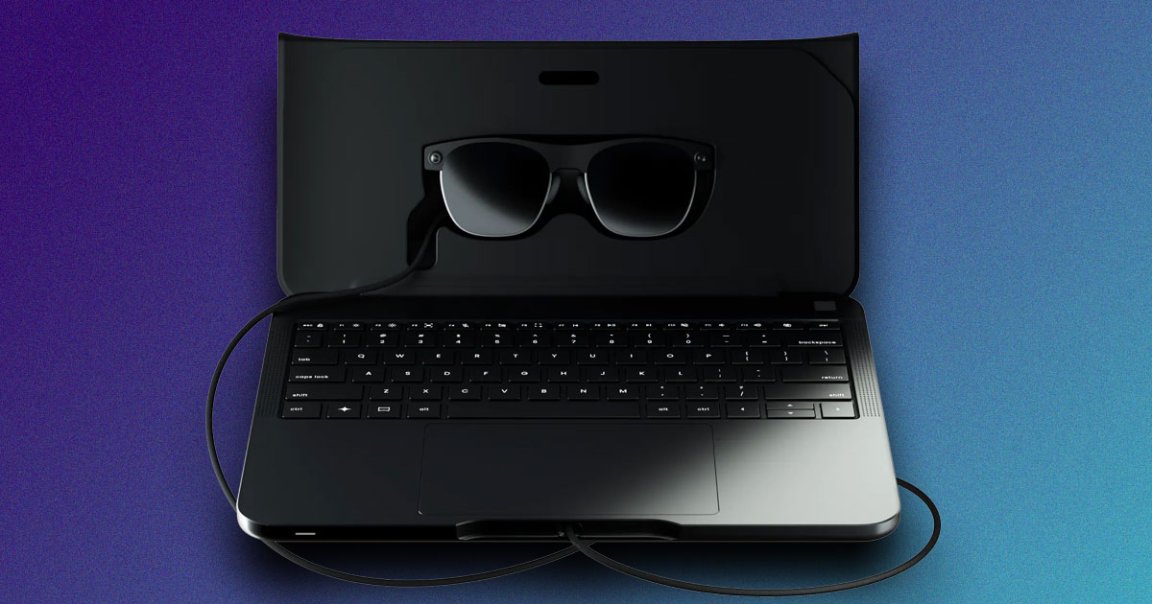
My Eyes Are Up Here
A company called Sightful has fully doubled down on augmented reality glasses by releasing an unusual laptop called the Spacetop G1, which literally doesn’t have a screen.
As Laptop Mag reports, the company partnered with AR glasses firm XReal to come up with a pair of glasses that handle all of the device’s visual elements — a decidedly futuristic twist on the laptop’s decades-old clamshell design.
A sleek 90-second ad shows off the device’s capabilities, with users shown kicking back at the pool while staring through a pair of chunky, blacked-out Ray Ban-looking glasses, which can be stored inside a cutout in the flap attached to the device’s bottom half, where the screen would be on a conventional laptop.
But whether the unorthodox gadget will ever catch on remains to be seen. The tech is still in its infancy and the Spacetop G1 is a pretty niche take on an entirely unproven concept. Its steep $1,900 price tag may also scare away all but the most adventurous early adopters.

Tethered Glasses
There are also practical considerations. For one, you won’t be able to run any Windows (or Mac) applications — at least natively — on the device. The Spacetop G1 runs a custom version of Android, which means it shares more DNA with a tablet or smartphone than a traditional laptop.
Besides, is it even augmented reality in a strict sense? XREAL’s existing glasses have been lauded by reviewers for their lightweight build, but they don’t really interact with the real world in any major way besides showing your application windows hovering in front of you. As many have found, they work best once paired with physical blinders that block out light or electrochromic dimming built into the glasses themselves, bringing the setup closer to a virtual reality device.
“The concept of an AR laptop is certainly an interesting idea, but I foresee issues in its implementation, especially as it is/if it is Android based,” VITURE mixed reality glasses co-founder Emily Wang told Laptop Mag.
Wang also questioned the laptop’s almost $2,000 price. While that’s only about half the cost of Apple’s mostly forgotten Vision Pro VR headset — itself heavily marketed as a productivity-oriented desktop computing device — it’s still a considerable ask.
“For many, what they get may not outweigh what they sacrifice to get it,” she added.
After all, as Wang pointed out, for the same money, users could attach a pair of AR glasses to a regular Macbook or Windows device for far more flexibility.
In short, while the Spacetop G1 isn’t likely to fly off the shelves, it’s an intriguing attempt to create an all-in-one AR experience. Companies still have much to prove, and countless consumers to convince, that a pair of glasses attached to a keyboard is the future of getting work done while out in the world.
More on AR: Surgeons Use Apple VR Headset During Spinal Operation